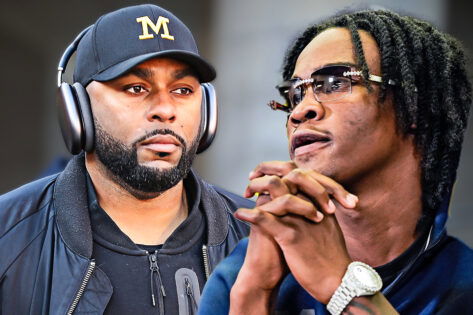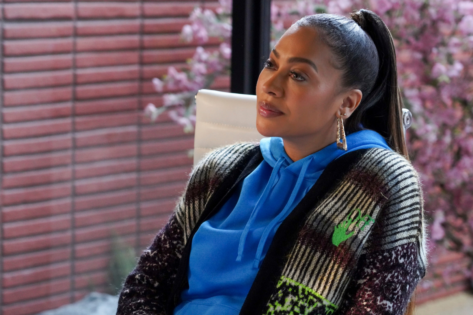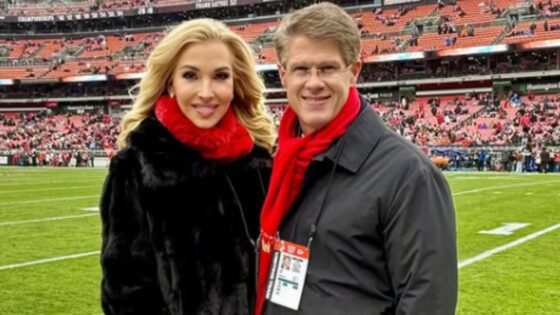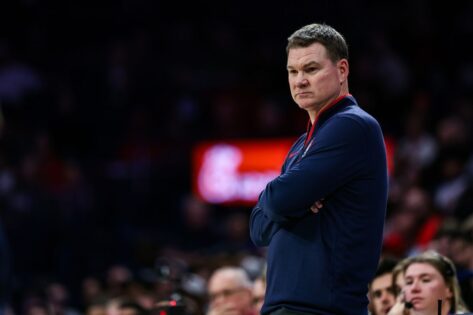What is it like earning paychecks worth 7 – or even 8-figures when you’re barely 20 years old? Those are the numbers some elite college football players are making these days, as NIL deals continue to change the face of college football. It’s become such a prominent aspect of the inner workings of the sport because of those flashy numbers. Arch Manning is being paid $6 million, Carson Beck is getting $4 million, and the list goes on. This off-season, the most protracted player saga saw Bryce Underwood flip his commitment from LSU to sign with Sherrone Moore’s Wolverines following a reported $12.5 million NIL deal over four years. Backed by Oracle co-founder Larry Ellison, Michigan was able to secure the 5-star quarterback
Doesn’t that lead one to wonder, from where and how so much money is arriving at programs? You would expect Sherrone Moore and Co. to feature among the elite group of programs. Except, they’re not.
The workings of NIL rights and compensation are still not fully known to the public. NIL collectives, which run the show, have various ways of sourcing funds. They’re set up with the agenda of providing ‘opportunities’ for college athletes. Their reach and gravity of operations can sometimes be stumping. Recruiting has become a ruthless activity nowadays because of how dedicated these collectives are at work. Crain & Company discussed the top 10 richest NIL collectives, which surprisingly – and suspiciously – misses a key program.
Topping the list is 1870 Society & The Foundation, which supports Ohio State. Their top prospect is obviously Jeremiah Smith, who is getting a yearly payout of $4 million at the moment. But glaringly missing from the list was Michigan. After all, they’re paying Bryce Underwood $12 million. Their absence led the hosts to raise their suspicions. “Michigan spent what, 12 million on just one quarterback and they can’t crack into the top 10? That’s why I’m not buying any of this,” said David Cone. He also joked, “Portnoy is probably going to get on the phone, and say, ‘Look, we gotta pump these numbers up.’” David Portnoy, owner of Barstool Sports, is a member of the collective that funds Michigan.
Credits: Twitter
Bryce Underwood’s much-talked-about recruitment campaign is a textbook example of NIL-influenced ones. He was getting 1.5 million at LSU yearly. And then, Michigan drops a mic-drop package of $12 million, and Underwood happily jumped ship from LSU. His campaign, which featured the presence of the shunned-upon Connor Stalions, was funded by the Champions Collective. And the key personnel behind this coup? It was none other than Oracle co-founder Larry Ellison and his wife, Jolin. Michigan is her alma mater, and she’s extremely “passionate” about the school’s athletics. Ellison is worth a whopping 230 billion, and Underwood is in his first stint in college sports.
Despite these numbers, Michigan is nowhere in the top ranking lists. Host Blain Crane said that if the QB is getting paid that much, “You [Michigan] got more money.” Cone then said, “You don’t think they’re spending money? I just think they’re doing a better job of, like, ‘Hey, don’t [give out] information.” Jake Crain decided to throw some more shade by saying, “If anybody can hide something, it’s Michigan.” He’s not far off, given their still-contested arguments about winning the 2023 National Championship “fair and square.”
The Sherrone Moore era is changing the mindset about NILs at Michigan
HC Sherrone Moore, unlike Nick Saban, doesn’t seem to hold too much against NILs. “It’s part of football now, it’s part of college football,” he told the press last year. Moore also seconded his support for former HC Jim Harbaugh’s ‘transformational over transactional’ motto. But, he has opened the gates wider for the latter part of it, given how NILs have become the norm in college football.
One of Champion Circle’s top campaigns, ‘Those Who Stay,’ was directed at retaining the program’s elite players. That’s why guys like Mason Graham and Will Johnson chose to stay at Ann Arbor when they were planning to enter the transfer portal last spring. Former players were also appreciative about the uptick in the NIL efforts pursued by the front office. “It was like one year we weren’t getting paid and one year we were all getting paid a good amount,” former TE Colson Loveland said at the combine. “I think it’s just a blessing how NIL works,” he added. Graham, too, noted the change. “I feel like they really stepped it up. They saw the other schools really excelling more than they would like to, but I feel like they kind of stepped it up in these recent years.”
“[It] isn’t just always financial, it’s putting guys in position, whether it’s internships or different things, to make sure you can have a goal that you want to do, and football is not here forever. What can we do to help you to accomplish that goal? So that supports a big piece of it, too,” Moore said. He’s one of the few coaches who seems to have changed their mindsets about how NIL controls college football now.
Michigan is valued as the 6th richest program in college football, and is valued at 16.3 million, according to NCAA estimates. Michigan has money, even if Moore tries to be modest about it. If the program can afford the recruiting class’s best player at 12 million, there’s much more where that comes from.
The post Michigan Accused of Hiding NIL Funds as $12M Bryce Underwood Move Puts Sherrone Moore’s Side Under Scrutiny appeared first on EssentiallySports.



